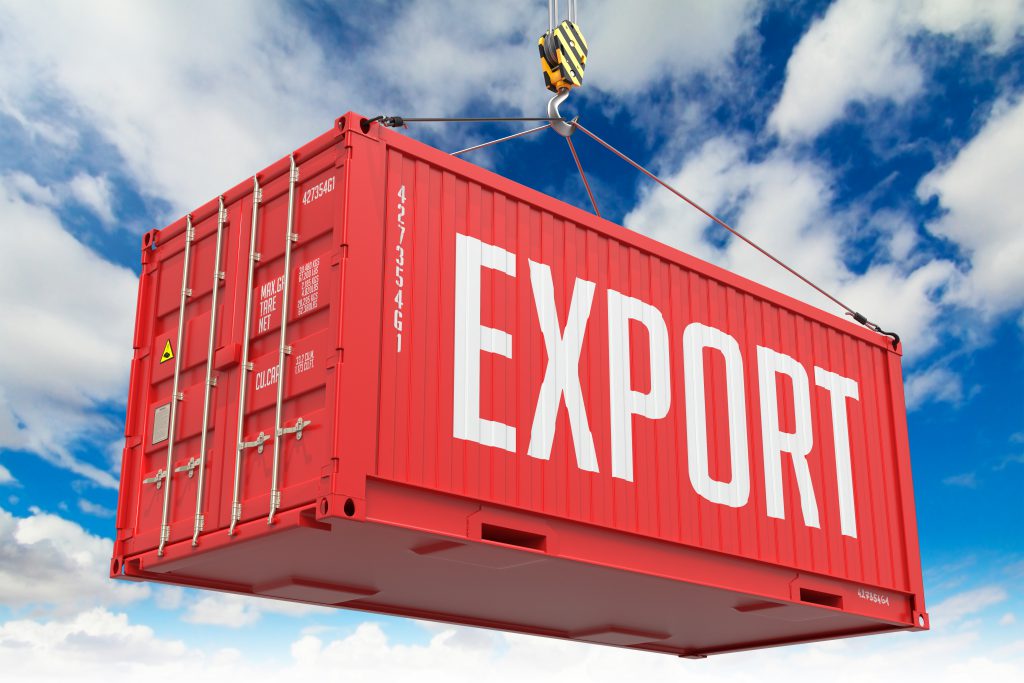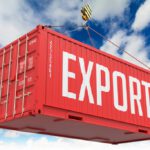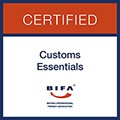Your Essential Guide to Customs Procedures and Their Implications What...

One of the most common customs procedures is the export of goods outside the EU. Certainly, as the business activity develops, every entrepreneur who plans to establish international trade will be confronted with the export of goods. Therefore, it is worth remembering that delivering goods to, e.g. the USA, Switzerland, Norway or Ukraine will require customs clearance.
If you plan to sell your products on these markets, you should know how to prepare for them in the first place, allowing you to get through the whole process without any problems, completing all the formalities according to the applicable law.
We assume that your company already has an EORI number. This number is key to starting any customs clearance procedures. If you haven’t received it yet, please read the following post.
Export documents – what do you need to know?
If you cannot complete your export documents, the customs agency will be able to help you. If the agency cannot clear your goods on your behalf, you will need to prepare a set of information and documents necessary to begin the procedure. All these formalities are detailed in the Regulation of the Minister of Finance of 8 September 2016 on customs declarations.
However, to make it easier for you to go through the maze of regulations, we have prepared for you the following summary, bringing together the most important attachments you need to include in the customs declaration:
Invoice (provisional invoice or proforma invoice for shipments of non-commercial goods such as promotional and advertising materials, returnable packaging, export samples and others). In the absence of the above documents, a contract of sale, a court or other competent authority ruling confirming the acquisition of succession rights or a deed of gift may be attached.
Permits, authorisations and all other documents are required for the planned export of the goods. Depending on the type of goods to be exported, this may be a phytosanitary certificate (for plant sales), WIJHARS (for certain fruits), or an export licence for so-called dual-use goods. The specific documents that are required for a particular commodity can be determined from its customs code.
Goods specification/packing list – if the invoice does not allow for specification. It must be ensured that the customs agent can determine the net weight of the goods from the unique customs codes when making the customs declaration. The gross weight and the number of packages can be given as a total. Please note that these data are obligatory and must be included in each customs declaration.
Other documents, if required by different regulations.
Export invoice – How it should look like?
The most important document, which in some cases proves to be sufficient, is the export invoice. To prepare a customs declaration, it should contain, by paragraph 33 of the regulation mentioned above, the following points:
- number,
- date and place of issue
- date and place of issue,
- date and place of issue
- data of the contracting party (name and address),
- data of the buyer (name and address),
- number,
- date and place of issue
- data of buyer (name and address),
- type and quantity of goods and their value in convertible currency,
- the INCOTERMS delivery terms,
- other data, if required by separate provisions,
Usually, export invoices are issued with a zero VAT rate.
It is worth remembering that original invoices are not required for customs declaration of export of goods. However, to avoid possible difficulties, it is advisable to send a copy of the invoice to the customs agency before declaring it to the Customs Office or other authorised body. The customs agent will be able to do formal verification, pointing out the areas that need improvement. This will make clearing your goods through customs much more efficient.
Export declaration – transport costs
Depending on what terms of delivery (from among those available in INCOTERMS regulations) you decide on, you must remember that you will have to indicate the number of transport costs. The request for the indication of costs may include expenses from the place of loading to the Polish border (such variant is most common in deliveries on conditions, e.g. FCA and EXW). In such a situation, transport costs are on the side of the recipient of goods, so often, the exporter does not know their total amount. In such a situation, a realistic estimate should be made. This recommendation also appears in the instruction manual for filling in customs declarations, prepared by the Ministry of Finance. If the Customs Agency has the relevant data, it will be able to add them to indicate the correct statistical value in the declaration.
The situation is entirely different when the transport costs of goods outside Poland are added to the value of the goods on the invoice (e.g. under DAP, CFR conditions). In such a case, the costs related to transporting outside the country will be deducted in the declaration, thus decreasing the statistical value of goods.
Restrictions on the export of goods
The customs tariff indicates several restrictions that vary depending on the customs code of the goods used. Usually, however, they are not applicable in practice. It is then up to the exporter to prepare a statement indicating that the exported item does not fall under the restriction provisions. Whether or not you will be subject to the restriction provisions is strictly reflected in the additional codes of the customs declaration. In the case of exports of goods, restrictions will apply to goods such as exports of protected species (Y900), dual-use goods (Y901), waste (Y923) or cultural goods (Y935), among others.
Usually, customs agencies have sample declarations ready, so it is advisable to ask for them. It is important to remember that signing an order involves criminal liability, so the declaration should be factually correct. Be sure to read the statement before you sign it.
ATR, EUR.1 or certificate of origin
Another fundamental issue that arises when organising customs clearance for export is the possession of the above documents. Depending on your customer’s requirements and the direction of exportation of the goods, other certificates of origin may be required. There are situations in which possession of the relevant certifications is a decisive element for completing a transaction. This is why we have dedicated a separate entry to this topic. Please read it when planning to export your goods.
TIR carnet and CMR transport documents
It is necessary to issue a CMR – International Consignment Note when choosing road transport. This basic document enables the shipper to complete the transport of exported goods. Its possession is obligatory for every shipper. The CMR includes, above all, data on the consignor and consignee and the type and quantity of goods. Special care must be taken to ensure that this document is completed accurately, as it often serves as an aid to the completion of the full customs declaration. In addition, errors in the CMR may cause problems for the carrier, e.g. during an ITD inspection.
The TIR carnet also concerns road transport and allows for significant facilitation of the transportation of goods under customs seals across the borders of many countries. The particular advantage of having it is that the customs authorities of these countries take no security during transit between the EU and countries which are members of the TIR Convention. This document in itself provides guarantees that certain requirements are met. It should be noted that possession of a TIR Carnet is not mandatory and is usually the carrier’s responsibility.
The TIR Carnet is ‘opened’ at the time of export clearance or when the goods are released for export and you will already have confirmation that the goods have been exported, even though the goods are still physically within the EU. A TIR transit is usually closed when it reaches the destination country during the import clearance. You may encounter such closure when sending your goods to Turkey, Russia, Moldova or Kazakhstan.
It is important to note that both the TIR Carnet and the CMR can be written out/issued by the Customs agency as part of its service at your (or the carrier’s) request. Furthermore, the TIR carnet will also be sent electronically directly to the NCTS system.
IE599 message – confirmation of export
Please note that you will only be entitled to apply the zero VAT rate for export when receiving the IE599 message. This message is a specific confirmation of export outside the EU, which is generated in the AES system created to handle export declarations in Poland. You receive such a message as an e-mail attachment, usually in XML or PDF format.
The customs agency should provide this message at the very end of the customs declaration procedure. This message will mean that e.g. the truck that exports your goods or the parcel you have shipped has already left the EU, and the entire export procedure has been completed.
It is important not to confuse the IE599 message with the IE529 message. The latter merely indicates that the goods have been released for the export procedure. It is normally sent at the moment when the goods are presented at the customs branch or approved place of the agency that is responsible for carrying out the customs clearance.
The printout of this message has its own MRN and barcode, which are located in the upper right corner. This document is sometimes referred to as an EX, EAD or MNR. It should be delivered with the goods to the previously indicated EU border. It is advisable to check beforehand whether the data contained in the document is consistent with that in the commercial documents. Catching possible discrepancies ahead will allow you to correct them before the export procedure begins. If an error is overlooked, it may need to be resolved at the border, causing unnecessary downtime for the goods until the clearance is completed.
Summary.
Although exporting goods is now one of the most common customs procedures, it can still cause numerous problems for traders. This is usually due to inadequate documentation preparation, including the omission of necessary data. Furthermore, problems can arise when goods need to be sealed, which a customs officer decides during the ongoing clearance process. Exporters are often unaware of their obligations when sending goods outside the EU. They sometimes assume that if the customer collects the goods from them, they are relieved of their delivery obligations. However, they should be fully involved in organising the export clearance by choosing the right customs agency, bearing in mind that it is in their interest to receive the message that will confirm the export of the goods.
The CE (Conformité Européenne) symbol is the main marking, which...









